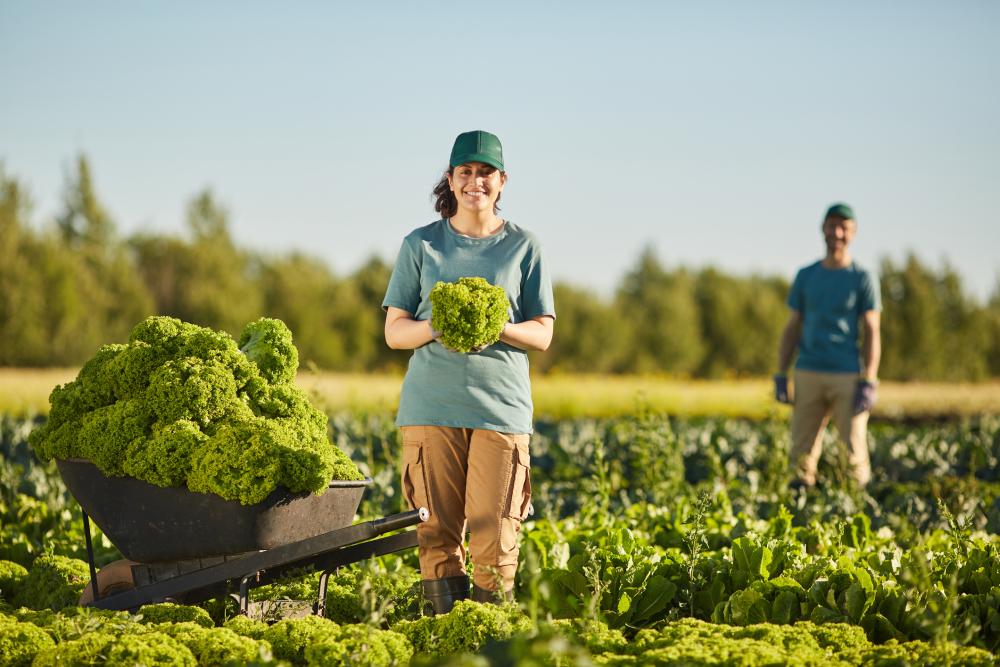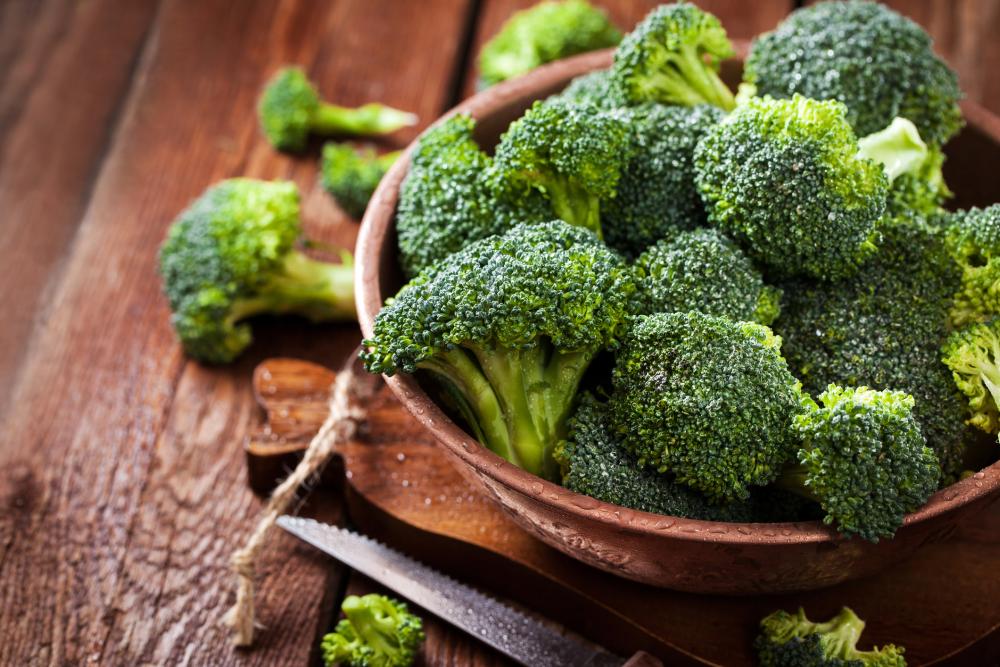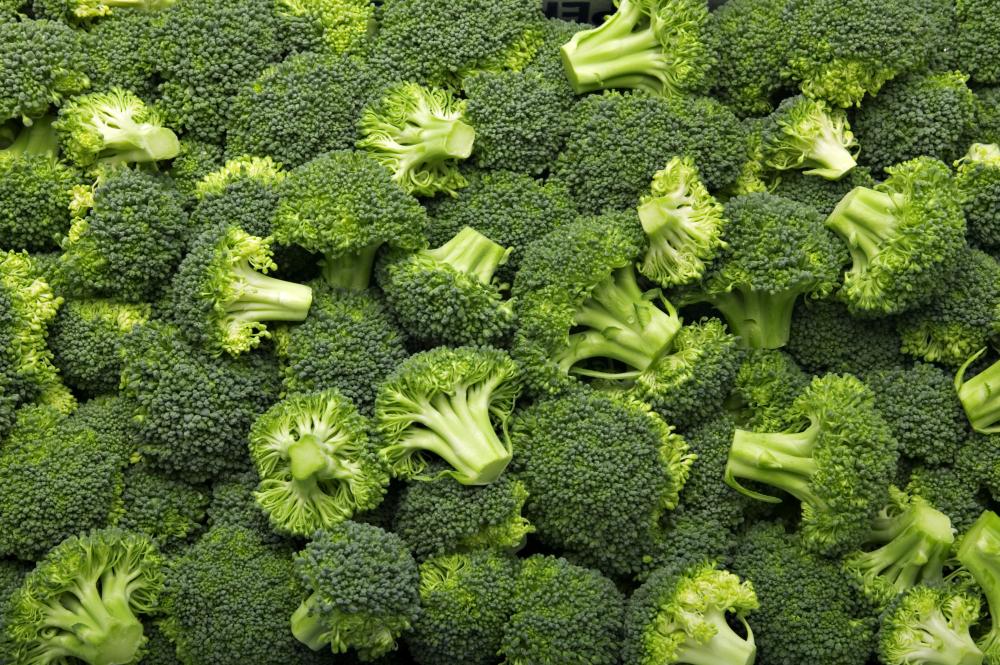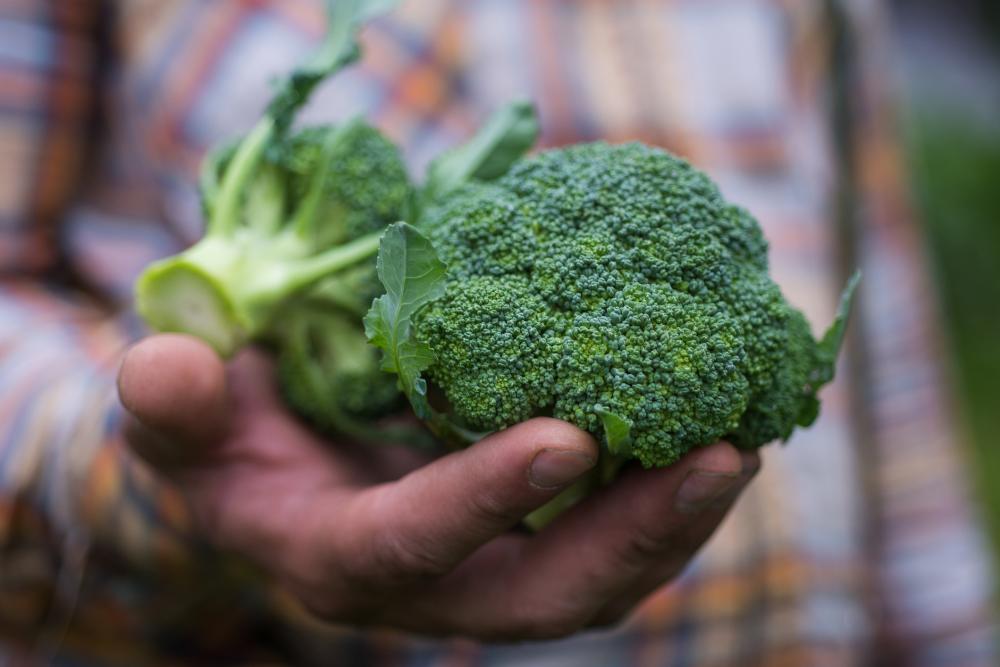Broccoli Growing Problems: Make Sure Your Crop Is Healthy
Once the butt of vegetable jokes, broccoli has found recognition as a healthy food advocated by dieticians and health experts. Gone are the days when the US President would admit to hating broccoli on national TV only for broccoli growers to send trucks loaded with the veggie to the front doors of the White House in protest. These days broccoli takes its rightful place at the heart of every healthy diet and food regimen.
And nothing tastes better than broccoli than fresh broccoli, newly picked from your own veggie garden. But as usual, growing the vegetable comes with its own set of challenges. Apart from the usual care, other broccoli growing problems might crop up.
Broccoli Buttoning
Although the leaves of broccoli are also edible, and if you harvest them young enough, you can have them in salads, it’s the head of the plant that draws most foodies. Most broccoli varieties will grow one large head in the middle. When harvested, the plant will continue to produce smaller lateral heads on the side. That’s continuous harvesting as long as you keep the plant in the soil and the weather allows.
But sometimes the vegetable grows healthy with plenty of leaves but no head in the middle. It’s like a cabbage variety but with less succulent leaves. This great disappointment can happen for many reasons.
It could be cold weather catching up with the veggie due to late fall planting. This is called broccoli buttoning, and the cold temperatures cause the plant to grow small heads that never fully develop.
Damage to the roots also can be behind the lack of head forming. With an underdeveloped root system, the plant becomes stunted.
How to Fix It
Since broccoli is rather sensitive to extreme weather conditions, you need to plan your planting time so that the vegetable grows during the cool seasons. Here are a few tips.
- For the summer harvest, plant your broccoli as early as possible in the spring. If you have a short growing season, you can start the seeds indoors then transplant them out to the garden when the soil warms up.
- For winter harvest, plant the broccoli in the early fall as soon as the temperature cools down. Keep an eye out for the first frost and plan accordingly.
- Don’t stress the plant with poor nutrients or irregular watering since that causes buttoning.
- Apply mild fertilizers such as rabbit compost tea and fish emulsion to boost the growth.
- Allow the broccoli enough time to fully develop. Some varieties need about 70 days before they’re ready to harvest.
Broccoli Companion Plants
Since not everyone has the luxury of large and spacious gardening space, gardeners tend to grow different plants in their veggie patches. But as we all know, not all vegetables and herbs go well together. Some develop symbiotic relationships like the three sisters, while others become combative and get locked into a lethal battle for resources and space.
Some plants like garlic and mint are natural pest repellents, while others will draw pests to them instead of vegetables. So when it comes to broccoli, it’s more of a balancing act. You’d want to utilize every inch of your garden by planting as many veggies and herbs together as possible. At the same time, the finicky broccoli doesn’t get along well with every other vegetable and herb. So how would you solve this puzzle?
How to Fix It
Even though broccoli varieties famously have a wide array of flavors, you can still improve on that natural taste by planting broccoli along with celery and onions. Potatoes and chamomile give broccoli an edge taste-wise.
Other veggies such as cucumber, beans, and beets, and herbs like marigold and sage are great companions for broccoli. You can also grow it alongside mint, dill, rosemary, and nasturtiums. Many of these herbs repel pests that attack broccoli. Broccoli flies, for example, will not get near to rosemary.
That said, other plants and veggies don’t do well when planted with broccoli. So avoid growing it with cauliflower, tomatoes, strawberries, or cabbage.
Loose Heads On Broccoli
Since broccoli heads are the most important part of the plant, most of the broccoli growing problems revolve around them. From buttoning to no heads at all, or even loose heads. So what are loose heads in broccoli?
As a cool-season vegetable, broccoli responds to sharp temperature rise erratically. It simply opens up the leaves and gets ready to bolt. This causes the heads to become loose and almost wobbly. This is most likely to happen in the spring than in the fall. When the temperature rises quickly above 85 degrees F and stays there for days on end, the plant becomes stressed.
Other conditions might also cause stress to the sensitive broccoli. Infrequent watering and lack of nitrogen in the soil can also trigger the vegetable to respond with wobbly heads. So how would you keep the broccoli head firmly lodged in the crown of leaves?
How to Fix It
Good planning and good broccoli care are the keys to a successful vegetable crop. Choosing the right time to plant it or even the right season can be the difference between healthy heads and heads that get blown with the wind.
- If your spring is rather warm and blends into summer too quickly, then you should plant broccoli in the fall. Plant the vegetable between 55 to 100 days before the first frost depending on the variety.
- Make sure the soil pH is between 6.0 and 6.9.
- Plant broccoli in an area that gets full sun.
- Check the nitrogen levels in the soil. If it’s poor in nitrogen, apply fertilizers or plant it with companion plants that fix nitrogen in the soil, such as beans.
- Amend the soil with plenty of organic compost and aged manure.
Worms In Broccoli
Worms and vegetables don’t mix. The only time you’re happy to see a worm is at the end of your hook before you drop it in the water. But certainly not crawling over your broccoli leaves and shoots. Still, it’s a given that at one point or another, you’ll see the dreaded things feeding off the leaves of the vegetable.
Before you rush to the pesticide can to spray them off, you need to know which type of worms you’re dealing with here exactly. In general, three types of worms attack broccoli.
- Diamondback worms: These are, in fact, larvae of the gray moth. After they hatch, they start feeding on the young leaves of the broccoli. They’re tiny light green crawlers with diamond-shaped patterns on their backs.
- Cabbage worms: The most common worms that attack broccoli. They also attack cauliflower, cabbage, and Brussel sprouts. They’re large, thick, and have a dark green color that makes it easy for them to hide among the leaves. These worms are the larvae of white butterflies.
- Cabbage loopers: After black moths lay their eggs, the larvae hatch and proceed to strip the vegetable of the last morsel of green leaf. They have smooth bodies and light green color.
How to Fix It
Although broccoli worms don’t come near the head and focus mainly on the leaves, they are still a pest to be eliminated. But don’t reach for your general-purpose pesticide yet. This would do you, the broccoli, and the garden a disservice.
Instead, you can do the eco-friendly thing and pick the worms by hand and drown them. Keep a bucket full of soapy water next to you and gather all the worms in one go. It might take a couple of hours to clean up a whole patch, but it will keep your broccoli and garden safe.
Another option is to spray the vegetables with Bacillus thuringiensis. The bacteria attacks and kills the worms without posing any risk to the plants or humans.
You can also use row covers to protect the vegetables from white butterflies, gray moths, black moths, and other pests. That way, they can’t lay their eggs on the plant.
Bolting Broccoli
Broccoli bolting is another one of those broccoli growing problems that have a lot to do with the high temperature than anything else. Spring broccoli is more susceptible to bolting than those planted in the fall. While cold weather causes buttoning, steady rises in temperature cause the vegetable to go straight to seeding.
Unfortunately, once the tiny flowers open at the top of the vegetable, the head becomes too bitter and chewy to eat. In that case, you can let the vegetable continue in the soil to grow seeds, or you’ll just uproot it and plant another summer vegetable instead.
Once the temperatures go above 85 degrees F and stay there, the stressed plant responds by opening up the buds in the head. So how can you avoid that?
How to Fix It
There’s no fixing broccoli that has already bolted. However, you can take steps to prevent that from happening and buy yourself some time until the broccoli is ready to harvest. Here are some preventative actions to take that could stop broccoli bolting in its tracks.
- The most temperature-sensitive part of the broccoli is the roots. Once the soil temperature rises, bolting ensues. So mulching is a good way to keep the soil and the roots cool. Lay a 3-inch thick layer of straws, leaves, or chipped bark to protect the vegetables.
- Keep the soil moist as the temperatures rise. Moisture keeps the plant cool and prevents stress.
- Offer shade from the afternoon sun with row covers. This also acts as a defense against pests.
- Don’t let your broccoli plants in the soil more than necessary. Harvest the vegetable early to avoid broccoli bolting.
Broccoli Container Growing
Living in hot zones that are way beyond the range of broccoli should not stop you from growing the vegetable. If your growing season is short or your summer comes early, you can grow broccoli in containers.
It can be tricky to grow broccoli in a pot instead of the garden. For one thing, the vegetable requires a lot of space in effect, you’ll be limited to one plant per container. Providing the right growing conditions for the vegetable can be challenging as well. Since it flourishes in the full sun, you’ll need to give at least 6 hours of direct sunlight every day.
That said, broccoli container growing saves you the trouble of dealing with excessive heat, sharp drops in temperatures, and all the other weather-related problems we have covered so far.
How to Fix It
In general, you should choose a suitable container for the plant. Each broccoli needs to grow in its own medium-size container. Anything between 5 to 7 gallons will do. Don’t use dark containers since they heat up faster in the sun, which leads to bolting.
You can use soil from the garden, or any general-purpose potting mix. Make sure the soil is balanced in basic nutrition with an extra dose of nitrogen for fast and robust growth.
Keep the plants well-watered and well-fed. The soil in a container dries out faster than that in the garden.



